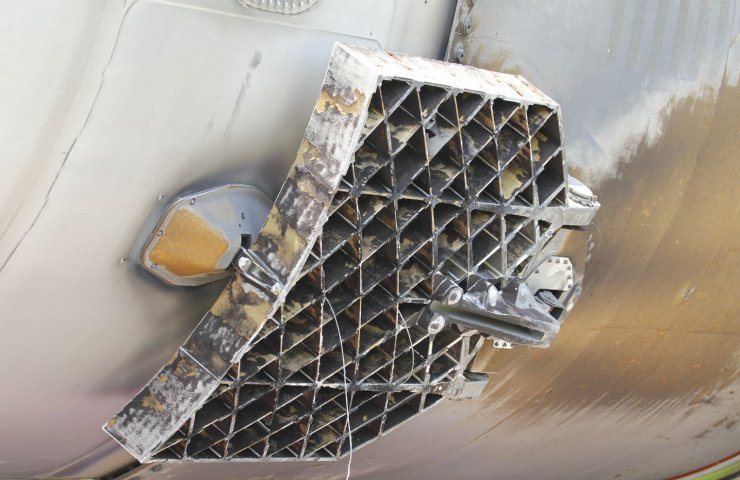In response to a question from a Twitter user, SpaceX CEO Elon Musk stated that the lattice rudders of the Super Heavy and Falcon 9 spacecraft will be made of stainless steel, which is certainly in the canvas of Musk's proverbial love for the material. In October 2018, Musk finally managed to convince most of the senior engineers who told him that despite years of work and full-scale testing, SpaceX needed to radically redesign Starship.
Prior to this radical change, SpaceX had spent at least 2-3 years designing a starship made almost entirely of carbon fiber composites, an extremely lightweight material that can be optimized for high strength. However, Musk ultimately concluded at the end of 2018, although carbon composites are undeniably lightweight and strong (optimal for space flight), they have extremely low heat resistance and can react violently with supercooled liquid oxygen. Constructed almost entirely from aluminum alloys with a similarly low melting point, the Falcon 9 also struggled with material selection difficulties, making it much more difficult to retrieve and reuse rocket stages.
Ultimately, Musk decided that Starship's transition to steel was the right path. Among its other advantages, the head of SpaceX said that stainless steel costs 50 times less than titanium or aluminum alloys, so the entire structure of the starship will cost only $ 10 million.
Speaking at the September 28 launch of the new Starship design, Elon Musk couldn't help but praise his decision to switch to stainless steel, calling it probably the single best design decision he has ever made. It remains to be seen if the eccentric self-taught engineer's decision was correct, but the progress SpaceX has made in just 10-11 months is undeniable.
According to Musk, the properties of stainless steel - mainly high melting point /operating temperature and a tendency to increase at cryogenic temperatures - means that a relatively heavy material is capable of creating a booster that could end up being much lighter and more efficient. than one made of carbon composites (BFR) or aluminum alloys (Falcon 9). Thanks to these properties, Starship /Super Heavy will become much stronger, and also will not require serious external thermal insulation on its leeward half, while a reusable aluminum /composite rocket will require serious thermal protection on almost all exposed surfaces.
As part of a move to remove any super-expensive non-essential materials from the Starship and Super Heavy designs, Musk has apparently also turned his attention to lattice rudders. As described at the beginning of this article, SpaceX replaced the Falcon 9's aluminum lattice rudders with titanium, which required the company to build the world's largest single-piece titanium casting facility. Musk has pointed out on several occasions that each bar is extremely expensive.
In light of the high costs, Musk seems to have decided that future SpaceX rockets will try to avoid large titanium castings. The Super Heavy still needs massive lattice rudders nonetheless: official renders released by SpaceX last month revealed a new diamond shape for the booster fins, and Musk later took to Twitter to announce they would be made of steel instead of titanium.
Based on the official SpaceX Super Heavy 2019 rendering, the grid rudders measure approximately 7 x 3 m, which is 10 times larger than the Falcon 9 titanium rudders. Despite the 301 series stainless steel has a melting point and heat capacity of about 15% lower than that of grade 5 titanium, its strength characteristics are otherwise similar, and at the same time remain mechanically efficient at almost three times higher operating temperature of titanium (840 ° С versus 330 ° С).
Most importantly, 301 stainless steel is not only about 15-20 times cheaper than titanium, but the process of making large steel components, especially with welding instead of casting, is much faster, easier and cheaper than working with titanium. With their fairly similar properties and increased size, it is likely that steel grate rudders will be virtually non-ablative even at the highest temperatures, and yet it will be extremely easy and cheap to repair or replace rudders in the unlikely event that they are damaged. >
Given how quickly and relatively easily SpaceX built full-scale flight equipment out of steel, it would come as no surprise if SpaceX was able to manufacture and test welded stainless steel rudders on the Falcon 9 soon.




